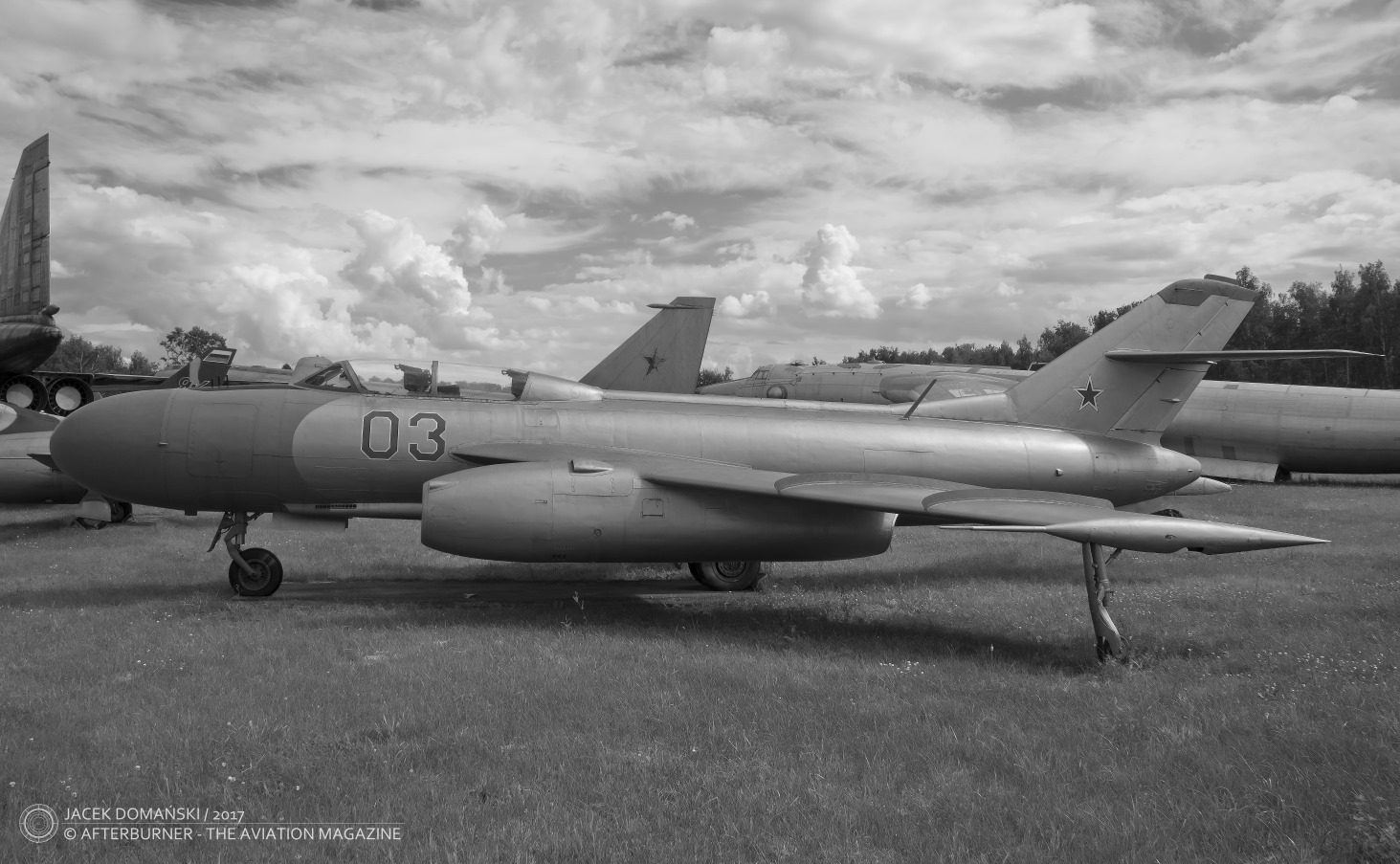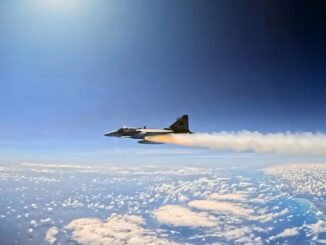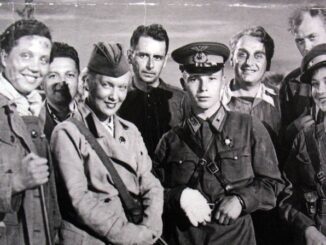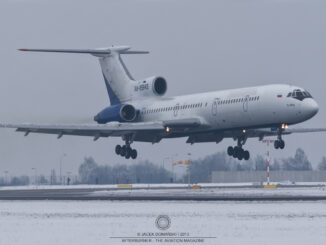 The maiden flight of Yakovlev Yak-25 (NATO reporting name “Flashlight”), turbojet interceptor aircraft.
The maiden flight of Yakovlev Yak-25 (NATO reporting name “Flashlight”), turbojet interceptor aircraft.
Yak-25 (initially developed as Yak-120) was answering the requirements for a long-range, high-altitude interceptor fighter, to be used in the northern and eastern territories of the Soviet Union.
This clearly defined role influenced the design of the aircraft developed by the Yakovlev Design Bureau. The Yak-25 was powered by two Mikulin AM-5 turbojet engines mounted under the wings. This made it possible to equip the aircraft with a powerful nose-mounted radar system – initially the RP-1D “Изумруд” (Emerald), which was later replaced by the RP-6 “Сокол” (Falcon).
Considerable attention was paid to maximising fuel capacity and ensuring effective de-icing. The Yak-25 had a two-man crew, a pilot and a radar intercept operator.
Continued development of Yak-25 resulted in almost 30 variants and prototypes, based on the initial design. One of the most-known aircraft from the family was Yak-25RV, high-altitude reconnaissance aeroplane (NATO reporting name “Mandrake”).
More than 600 aircraft of all versions were built. Yak-25s remained in service until 1967, during the final years of duty some of them were rebuilt for high-altitude target drones.
Pictured here is Yak-25 from the Central Air Force Museum in Monino, the museum has also Yak-25RV, exhibited next to the basic variant.



